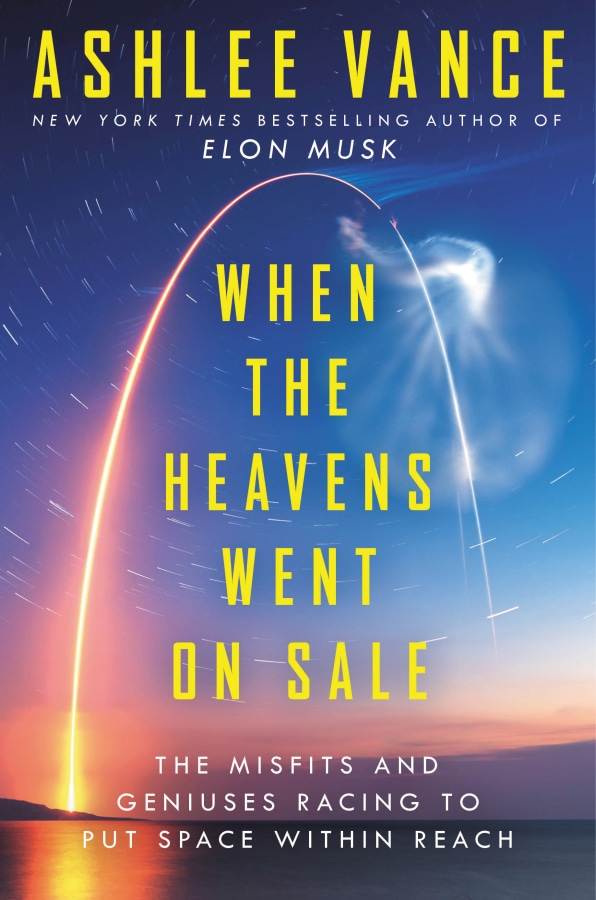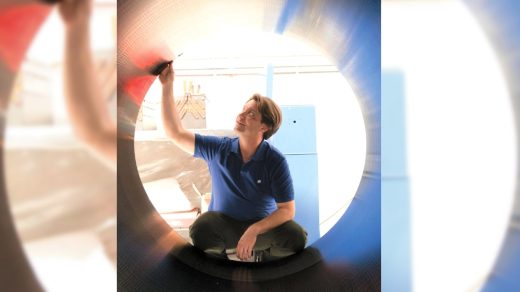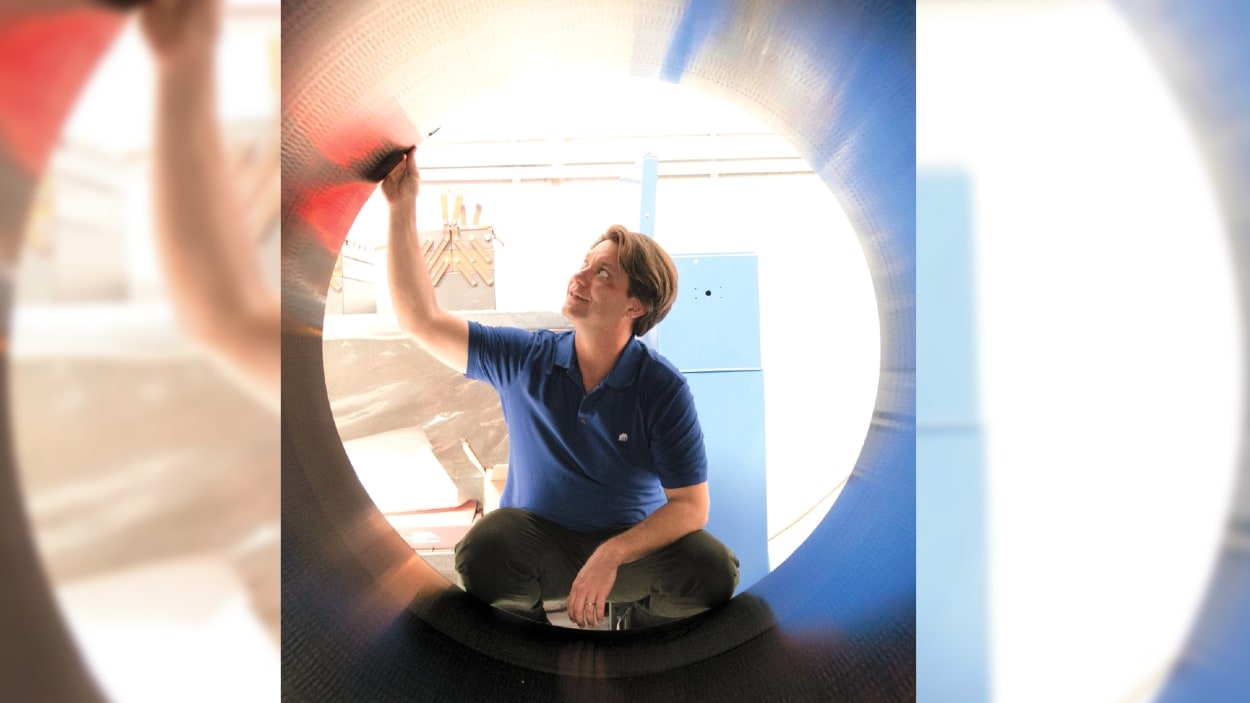Author Ashlee Vance on the commercialization of space and the land grab that ensued
Though space travel was once attainable only for governments and nations, it is now the stuff of Silicon Valley dreams. Thanks in large part to VC and billionaire funding, the space sector has become increasingly commercialized—even if international regulations haven’t kept up.

Journalist Ashlee Vance’s newest book, When the Heavens Went on Sale: The Misfits and Geniuses Racing to Put Space Within Reach, explores the evolving space landscape. Back in 2017, Vance, also the author of a best-selling biography on Elon Musk, began following four pioneering private companies—Astra, Firefly Aerospace, Planet Labs, and Rocket Lab—to trace the commercialization of space. Combining reporting from launch sites, labs, private company headquarters, and more, Vance chronicles the business of space exploration and Silicon Valley’s unique positioning at the center of it all.
Vance sat down with Fast Company to discuss the inspiration for the book, which comes out today, and the major geopolitical factors in the space realm. The interview has been edited for length and clarity.
Fast Company: What sparked the idea for When the Heavens Went on Sale?
Ashlee Vance: I’m not a space person by nature, but I did get really into space while doing the Elon Musk biography. Reporting on the early days of SpaceX was some of my favorite reporting, and right as I finished, it just sort of happened that I could tell there was this explosion of activity taking place in commercial space. I was like, “Oh, I can go to some of these companies and see what it was like in the early days.” It was more just to sort of satisfy myself. And then, as time went on, it got more and more exciting and the characters were larger than life, and it just kept getting more and more exotic and eccentric and fantastic. I resisted for a bit because I did not want to be seen as a space reporter, but then I had to give in to what was calling me.
FC: What did your reporting from the inside of these companies look like, and how were you able to build trust with them?
AV: This is a lot of reporting—we’re talking about thousands upon thousands of hours, with a number of subjects and across four continents over many years. If I’m being totally honest, I think the success of my Musk biography opened a lot of doors for me, in part because of the book, and in part because some of these people viewed themselves as perhaps wanting to be the next Elon Musk and didn’t hate the idea of having his biographer around to see what was going on.
The amazing thing is the subjects were very generous with their time and the access, and to their credit, nobody ever requested any sort of favorable treatment or [said] that anything was off the record. So I ended up in this situation where I had unparalleled access to a world that, frankly, is usually quite secretive. There are lots of national security concerns around this type of stuff, and it’s hard to get into a lot of these facilities, but it ended up being the best reporting of my life and exactly what I’ve been pining to do for a long time, which was really to be a fly on the wall . . . to watch the journey that these people and companies go on.
FC: In the book, you frame your argument around 2008 and the launch of SpaceX’s Falcon 1 rocket as the major turning point in the space-tech realm. How and why did you pinpoint 2008 in that timeline?
AV: The big picture is that for decades, since the space race began, it was controlled by a handful of governments, really just a few nations that could afford to charge after space. And every now and then, a wealthy person would try to make rockets, but nobody ever really cracked through.
In 2008, SpaceX, which was obviously backed by Elon Musk, got a private rocket to orbit, and it was not just this technical feat—it was the fact that a bunch of twentysomethings who had really never launched a rocket before did this. In the years that followed, as I argue in the book, it unlocked the passion and imagination of a lot of people who have become sort of bored and sad by space. And it really helped propel this transition from government-backed space to billionaire-backed space to venture-capital-backed space, and that’s how we’ve arrived at 2023 with . . . hundreds upon hundreds of commercial space startups.
It was kind of like when Roger Bannister achieved the 4-minute mile—it’s one of those things where once somebody does it, other people realize what’s possible, and it’s this mental hurdle that you get over collectively.
FC: What’s the most significant development you found in your reporting?
AV: There [were] quite a few big moments and technologies along the way. One is a company called Planet Labs. They make tiny, shoebox-size satellites. A traditional satellite is about the size of a school bus, it costs about a billion dollars to make, it might take 5 years to 10 years to develop, and then it’s meant to sit in space forever. But Planet rethought this whole idea. They had this thesis that consumer electronics and modern software had gotten good enough that you could try something different with satellites, so they made these tiny ones; they cost a minuscule fraction of a traditional satellite, and the idea was to put up hundreds of them.
The satellites are imaging satellites, so they take pictures of the Earth, and what they were able to do was put up so many satellites that they could take multiple pictures of every spot on the Earth’s landmass every day. This is dramatic because the U.S. government, China, or Russia—they only have a relatively small number of spy satellites, and they can only look at certain locations that they’re pointed at. So through the small satellites, Planet was able to photograph everything all the time.
It’s not really like espionage and watching humans moving around, it’s much more getting this picture over time of the sum total of human activity. Where are rainforests being cut down? How are geological features changing over time? Where are oil tankers moving right now? So it brought this truth to what’s happening in the world, and it changed the economics of what we do in space.
FC: What do you see as the major geopolitical factors today, and moving forward, in space-tech development?
AV: For 60 to 70 years, we had this natural order of things that was well-understood and a balance among these nations. It was an industry that moved slow and didn’t have to deal with terribly dramatic events that were unforeseen. The rapid rise of commercial space has changed this balance dramatically already. One data point would be from 1960 to 2020, we have managed to put up a sum total of 2,500 satellites in low Earth orbit, and most of those really were government-backed. In just the last three years, we’ve more than doubled that number already, and we’re going to double it again, and again and again, and it’s on an exponential curve heading to 200,000 satellites, maybe within the next decade, and the vast majority of those will be commercial satellites.
I think this is going to be a real challenge for the world. The U.S. right now has gone from sort of a sleepy, sad space program that was about to be completely eclipsed by China to sort of the envy of the world when it comes to commercial space. China is still pumping tons of money into government-backed space and trying to start up quasi-private space. And then Russia’s space program is collapsing. At the same time, you have this kind of land grab that’s taking place. I think the big takeaway is that whatever was normal before is gone, and we’re in for a very interesting, possibly optimistic, but also quite certainly chaotic time.
(9)



